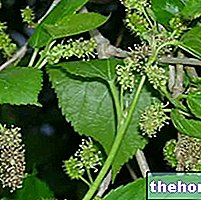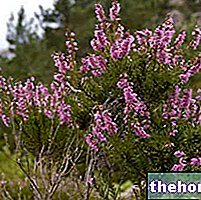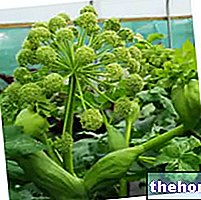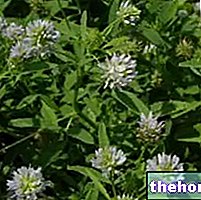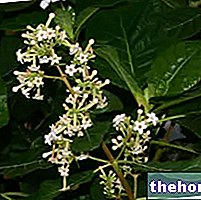Why grow medicinal plants?
If the cultivation is carried out with adequate techniques in an environment similar to that of origin, there are no negative variations regarding the quantity and quality of the product.
medicinal herbs have been cultivated since ancient times
some are difficult to find spontaneously
others are particularly sought after by the market
others are a major source of drugs
In many cases the cultivation of medicinal herbs has allowed important quantitative and qualitative improvements.
Factors that influence the quantity and quality of the active ingredients contained in medicinal herbs
Plants carry out their life cycle in close relationship with the habitat in which they live. The presence of active ingredients is therefore influenced by living conditions and cultural techniques. In addition to environmental factors, the content of active ingredients is influenced by their own genetic factors More generally we can speak of two different types of influences, one natural and one environmental
NATURAL: genetic or endogenous factors (selection, hybridization, mutation, polyplodia), age and stage of development of the plant
ARTIFICIALS: collection, preparation, conservation, animal alterations.
Age and stage of development: variations in the quality and quantity of active ingredients based on the vital stage (juvenile, mature or senescent). Alkaloids, for example, increase when the plant is already a few years old. It is no coincidence that in mint the concentration of menthol and menton increases with age.
Annual medicinal herbs must be harvested when fully developed, while biennials in the second year of life
The rhizomatous plants or plants with underground organs that constitute the drug should be harvested in autumn or more generally during the period of quiescence
In perennials, especially if they produce alkaloids, the content of active ingredients increases with age
Environmental factors: they cause large variations in the content of active ingredients. Precisely for this reason some medicinal plants brought into a habitat other than that of origin do not give the expected yield. Among the climatic factors, light and temperature play a role of particular importance, even individually.
The temperature rather than affecting the quality interferes with the quantity of active ingredients. The various secondary metabolites of plants are in fact the result of a series of biochemical steps, each of which occurs at an optimal temperature.
For example, the content of cyanogenic glycosides in clover populations is higher where the winter temperature exceeds 0 ° C. Cold seasonal trends in spring slow down the accumulation of essential oils in lavender.
Atropa belladonna, a medicinal plant grown in northern Europe, contains the maximum amount of active ingredients in July-August, that is, in the period of maximum exposure to LIGHT. Similar cases: opium poppy, cinchona and essential plants. aromatic grown in conditions of good brightness (maximum photosynthetic efficiency) produce oils very rich in esters and therefore very aromatic.
The lack of water in the soil tends to reduce the essential oil content of the medicinal plant.
SOIL: the essentier plants generally prefer a sandy soil; marshmallow contains the maximum amount of mucilage when cultivated on sandy soils, while valerian is not very active on marshy soils.
The pH is also very important: Roman chamomile tolerates alkaline pH and saline soils well; the poppy does not tolerate acid soils, licorice also adapts to salty soils (which are often flooded by the sea).
ALTITUDE: generally as you increase the altitude the content in active principles decreases but the quality increases
LATITUDE: as you move from tropical to subtropical environments, the content of unsaturated fatty acids increases. The milk thistle, for example, further south is rich in oleic acid (monounsaturated), while in the one grown in the north it increases the content of linoleic acid (polyunsaturated).
SOWING PERIOD: in the absence of excessive summer drought, it is better to plant as soon as possible
SOWING DENSITY: Excessive density damages the yield of herbs and medicinal plants. Other plants, such as poppy, benefit from dense plants; under the same conditions, mint accumulates more oil, more quickly.
FERTILIZATION: an excess of nitrogen can lead to an excessive development of the epigeal (external) part, compared to the hypogeal (underground) part; reduces the content in active ingredients of licorice; reduces the amount of essential oil in lavender.
Excess phosphorus depresses lavender oil yields. An excess of potassium decreases the amount of alkaloids in nightshade.
General information on the collection of herbs and medicinal plants
To establish the right moment of harvest, it is necessary to know the vegetative cycle (annual biennial etc. and the balsamic time of the plant.
BALSAMIC TIME: moment in which the quality and quantity of drugs contained in medicinal plants is maximum. In this regard, there are no specific indications, however the balsamic time of the aerial parts of herbaceous plants often coincides with flowering. The underground parts (roots, tubers, etc.) are collected during the dormant season The flowers are instead collected just before complete flowering
It is also important to collect plants and medicinal herbs on dry days to avoid the risk of fermentation. Rain could also break the outer hairs that contain secretions, reducing the essential oil content.
Select plant Fir Acacia Acerola Sorrel Yarrow Yarrow Yarrow Aconito Adatoda Garlic Agnocasto Agrimonia Alchemilla Alkekengi Aloe Altea Witch Hazel Ammi or Visnaga Pineapple Andrographis Anemone Pulsatilla Angelica Anise Star Anise Japanese Star Anise Bitter Orange Bitter Areca Arnica Harpagophytum Arpagophyte Artemisia Asteragus Basil Asparagus Asparagus Peruvian Asparagus Asparagus Asparagus Hawthorn Boldo Borage Shepherd's Purse Boswellia Bucco Butea superba Cocoa Coffee Cajeput Calamus Calamus Marigold Camedrio Chamomile Roman Chamomile Camphor Cinnamon Ceylon Maidenhair Capuchin Artichoke Cardamom Cardiac Thistle Asian Thistle Carvi Cascara Cassia Catecu Catha Cabbage Celandine Chicory Centaurea Cinnamon Cypress Celandine Chives Cypress Coca Cola Colchico Combreto Condurango Comfrey Coriander Cranberry Barberry American Chrysanthemum Cumin Turmeric Damiana Digital Dioscorea Drosera Dulcamara Dunalilella Echinacea Eder a Ephedra Elenio Eleutherococcus Helichrysum Evening primrose Horsetail Alfalfa Erica Euphrasia Erisimo Escolzia Eucalyptus Farfara Farfaraccio Calabar bean Fenugreek Fennel Phytolacca Frangola Ash Fumaria Japanese Mushrooms Galega Ganoderma lucidum Garcinia Cambogia Mulberry Gentian Broom Ginkgo Ginkgo Guipana Guipana Gynestra Ginkgo Hibelia Gymnasium Hibiscus Guarulp St. John's Wort Horse Chestnut Ispaghul Hyssop Jaborandi Kava kava Konjac Laminaria Cherry Laurel Lavender Lemongrass Lespedeza Lovage Icelandic Lichen Lemon Flax Lippia Licorice Lobelia Hops Maca Marjoram Maize Mallow Manna Marrubio Marrubio d "water Matè Melaleuca Meliloto American Lemon balm Myrtle Myrama Walnut Nutmeg Walnut vomica Olive tree Meadowsweet Ononide Opuntia Oregano Orthosiphon Nettle Poppy Papaya Parietaria Feverfew Passiflora Chilli Perilla Periwinkle Phyllanthus Plantain Picrorhiza Pilosella Pino Pisci dia Podofillo Polygala Grapefruit Parsley Psyllium Pueraria mirifica Butcher's broom Pygeum Quassia Oak Rhubarb Ratania Rauwolfia currant Castor bean Rhodiola Rosehip Rosemary Rue Willow Sarsaparilla Sage Elderberry Sassafras Sedum Ergot Senna Serenoa Repens Soybean Solidago Tansy Taraxus Tamarind Tamarind Tamarind Tamarind Tamarindo Ursina Valerian Vanilla Mullein Verbena Veronica Viburnum Vinca Pansy Mistletoe Vine Withania Yohimbe Saffron Ginger Pumpkin Select disease Juvenile Acne Rosacea Tinnitus Tinnitus Aerophagia Tendon Affections Afonia Aphthae Algias Functional Halitosis Breastfeeding Allergy Anemia Anguish Anxiety Arteriosclerosis Asthrosis Asthrosis Arthritis Arthritis Men Sex Woman Blepharitis and Conjunctivitis Eye bags Bronchitis Gallstones Kidney stones Salivary stones Baldness Androgenetic Candida Fragile hair Caries Headache Cellulitis Motion sickness Cystitis C limaterio Cholecystopathy High cholesterol Ulcerative colitis Colonoscopy Contusions Hematoma Convalescence Couperose Depression Dermatitis Diaper dermatitis Diabetes Diarrhea Erectile dysfunction Dyslipidemia Dysmenorrhea Dyspepsia Disturbances of vision Hemorrhoids Epistaxis Herethism Heart disease Fever Fibromyalgia Gastro-intestinal disease Flatulence Hypertension Fibromyalgia Gastrointomnia Jaundice Laryngitis Renal lithiasis Toothache Sore throat Thinness Menopause Meteorism Mononucleosis Alzheimer's disease Crohn's disease Nausea Vomiting Obesity Dark circles Onychomycosis Osteoporosis Dry skin Periarthritis Piorea Low pressure Prostatitis Psoriasis Colds Breast fissures Anal fissures Gastro-nasal rhinitis Senescence Premenstrual Syndrome Sinusitis Quit smoking Overweight Fatty liver Constipation Stomatitis Stress Cough Triglycerides high Ulcer Burns Nails Brittle flashes Heat Warts Dizziness Properties herbal Tanning Abortive adaptogenic Aphrodisiac bittering analgesic anesthetic anorectics analgesic antacid anti-allergic anti-asthmatic Antibiotic catarrh Anticellulitiche anticonvulsant Antidiaforetiche antidiarrheal edematous anthelmintic antiemetic Antiemorroidarie antiphlogistic Antiidrotiche Antinevrotiche Antioxidants antipyretic antirheumatic antiscorbutic Antiseptic antispasmodic anti-uric Aperitive Flavoring Astringent Balsamic Bechiche Capillarotrope Cardiotonic Carminative Cathartic Caustics Healing Cholagogues Choleretic Dyes Decongestants Deodorants Purifying Diaphoretic Cleansers Disinfectants Detoxifiers Thirst quenching Diuretics Exciting Emetics Emmenagogues Emollients Hemostatic Energies Hepatoprotectors Expectorants Eupepticus Moisturisers Galactosensitizers lanti Hypertensive Hypnotic Hypoglycemic Hypotensive Irritants Laxatives Soothing Narcotic Nerves Nutrients Odontalgic Pectoral Purgative Revulsive Remineralizing Refreshing Rubefacient Scialagoghe Sedative Soporifugas Sneezing Stomachic Stomatics Narcotic Vascular Tightenitis


